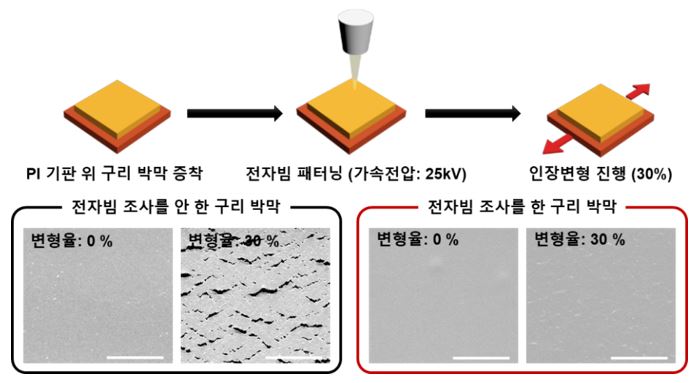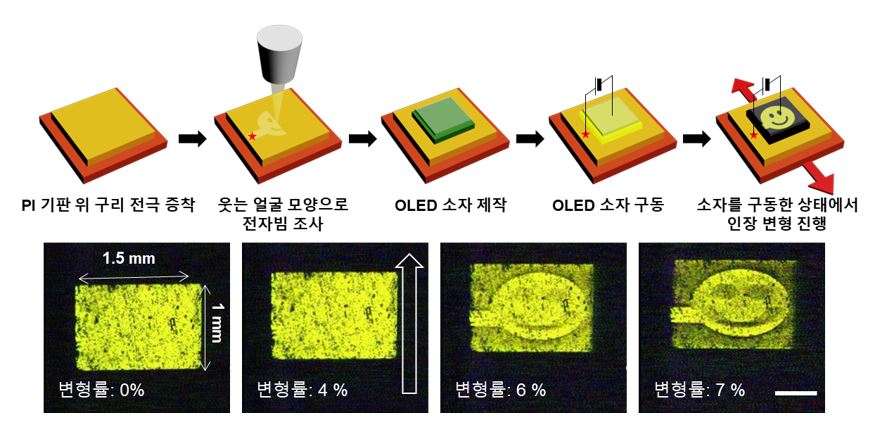loaction
SNU College of Engineering Develops Increasing Metal Electrode Fabrication Technology
-
작성자
관리자
-
등록일
2019.11.15
-
조회수
577
SNU College of Engineering Develops Increasing Metal Electrode Fabrication Technology
-New Technology for Controlling the Crack Generation of Metal Thin Film in Tension Deformation Using Electronic Beam Survey

▲ The Formation and Effect of Electron Beam in Copper Thin Film with a 100 nm Thickness of the Electromagnetic Beam developed by the Research Team
A joint research team consisting of Professor In-Suk Choi and Young Chang Joo of SNU Department of Materials Science and Engineering and Professor Changsoon Kim of the Graduate School of Convergence Science and Technology, announced on October 21 that they have developed a new technology to curb the cracking of metal thin films when they undergo tensile deformation using electron beam research.
Because the thickness used in electrodes for electronic devices such as semiconductors and displays is hundreds of nanometers, thin metal membranes can easily cause fine cracks even if they are pulled by only a few percent, making them impossible to be used. Controlling these cracks, which has recently become a hot topic in the electronics and materials industries, is critical to the development of flexible and stretchable electronic devices .
The SNU College of Engineering team examined the electron beam on a 100-nm-thick copper thin film deposited on a flexible substrate and showed that cracks in the copper thin film were inhibited when the substrate was pulled. Moreover, not only did this technology demonstrate crack-free thin films at 30%, a strain figure that was previously unthinkable, it also investigated electron beams at particular areas, freely controlling the shape of areas where cracking generation is inhibited.

▲Tensile sensitive organic light-emitting diode devices manufactured by the research team with electron beam irradiation technology.
Furthermore, by applying this technology, the team successfully produced tensile sensitive OLEDs (Organic Light Emitting Diodes) that match the pattern of irradiation of electronic beams, showing that the corresponding technology can contribute greatly to the production of various flexible elements in the future.
Meanwhile, the research was carried out through the support from the Regional Leading Research Center and Mid-career Research Grant of the National Research Foundation of Korea as well as SNU Rising researcher for leading creativity and the research paper that had Dr. Soyeon Lee as the first author was published in the October 1 issue of Nature Communications.